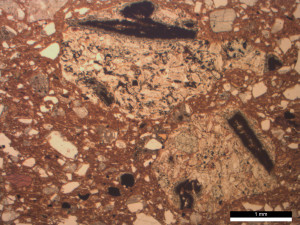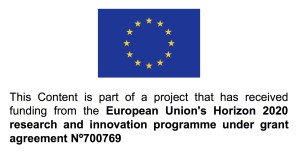Introduction to Ceramic Petrology Course, 15-26 May 2017, organised by the Fitch Laboratory, British School at Athens
Since 2010 the Fitch Laboratory has offered a course entitled ‘Introduction to Ceramic Petrology’ led by Dr Evangelia Kiriatzi and Dr Ruth Siddall. The first week is dedicated to Geology & Petrology (led by Ruth) and the second week focusses on Petrology Applications to Ceramic Studies (led by Vangelio). Both weeks were filled with lectures and practicals.
For detailed information on the course and how to apply visit: http://www.bsa.ac.uk/index.php/teaching/postgraduate/ceramic-petrology
During these two weeks we learnt how to use the Polarized Light Microscope, how to recognize rock types and fossils in thin sections, how to read and interpret geological maps. We went on a field trip to Aegina which offered an insight into geological prospection and sampling as well as the usage of local clay in a traditional pottery workshop. And with all this newly acquired geological background we then set out to handle clay-rich materials, examined ceramic thin sections, learned how to find out about provenance and technology and how to systematically describe ceramic fabrics.
Michalis Sakalis showed us how to prepare thin sections, Noemi Müller gave us a introduction to chemical analysis, Georgia Kordatzaki showed us how to make and fire a pot and John Gait used up all his patience to talk us through the practice on microscope photography while Zoe Zgouleta took care of all the administrative issues.
My warmest thanks go to all of them for sharing their knowledge and for teaching us with this amazing enthusiasm and patience.




